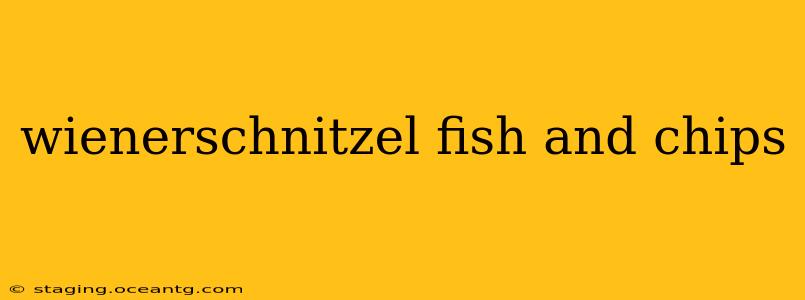The culinary world offers a vast landscape of delicious dishes, and sometimes, seemingly disparate options spark intriguing comparisons. Today, we're diving into a taste-off between two beloved fried delights: the classic Wienerschnitzel and the quintessential Fish and Chips. While geographically and traditionally distinct, both dishes share a common thread: crispy, golden-brown breading surrounding a tender, flavorful core. Let's explore their differences and similarities to determine which reigns supreme – a decision ultimately left to your personal palate!
What is Wienerschnitzel?
Wienerschnitzel, originating from Vienna, Austria, is a thin, breaded, and pan-fried cutlet of veal. The meat is pounded paper-thin, ensuring a delicate texture after cooking. The breading, typically involving flour, egg, and breadcrumbs, is key to its characteristic crispness. Authentic Wienerschnitzel is served with a simple lemon wedge and often accompanied by potato salad or boiled potatoes. The quality of the veal is paramount, contributing significantly to the dish's rich and savory flavor.
What is Fish and Chips?
Hailing from the United Kingdom, Fish and Chips is a beloved national dish. As its name suggests, it consists of battered and deep-fried fish (typically cod or haddock) served alongside thick-cut chips (fries). The batter, often made from beer or sparkling water, creates a light and airy coating that contrasts beautifully with the flaky fish inside. A generous portion of malt vinegar and a dollop of tartar sauce complete this quintessential British comfort food.
What are the Key Differences Between Wienerschnitzel and Fish and Chips?
The differences between Wienerschnitzel and Fish and Chips go beyond just the main ingredient. Here's a breakdown:
- Meat vs. Fish: The most obvious difference lies in the protein source. Wienerschnitzel utilizes veal, while Fish and Chips uses various white fish.
- Cooking Method: Wienerschnitzel is pan-fried, resulting in a more direct and even heat distribution. Fish and Chips is deep-fried, leading to a crispier, more uniformly cooked batter.
- Breadcrumbs vs. Batter: Wienerschnitzel relies on a classic breadcrumb coating, while Fish and Chips uses a thicker, often beer-based batter.
- Accompaniments: Wienerschnitzel is often served with a simple lemon wedge and potatoes, showcasing the delicate flavor of the veal. Fish and Chips pairs perfectly with malt vinegar and tartar sauce, complementing the richness of the fried fish.
- Cultural Significance: Each dish holds a special place within its respective culture. Wienerschnitzel represents Viennese culinary heritage, while Fish and Chips symbolizes British tradition and working-class history.
What is the Nutritional Difference Between Wienerschnitzel and Fish and Chips?
Both dishes are high in calories and fat due to the frying process. However, the nutritional profile varies depending on the specific ingredients and preparation methods. Fish and Chips tends to be lower in saturated fat compared to Wienerschnitzel, assuming lean fish is used, as the batter absorbs less fat during the deep-frying process. Wienerschnitzel, using veal, will generally contain a higher percentage of protein. It is crucial to consider portion sizes when comparing the nutritional value of both dishes.
Which is Healthier: Wienerschnitzel or Fish and Chips?
Neither Wienerschnitzel nor Fish and Chips are considered health foods due to their high fat and calorie content from the frying process. A healthier alternative for both would involve baking or grilling instead of frying. The nutritional content also varies depending on the specific ingredients; leaner cuts of veal and fish choices lower in fat will have healthier profiles. Moderation is key when indulging in these culinary delights.
Conclusion: A Matter of Taste
Ultimately, the "better" dish comes down to personal preference. Wienerschnitzel offers a sophisticated, delicate taste experience rooted in Viennese tradition, while Fish and Chips provides a hearty, comforting classic loved worldwide. Both dishes represent culinary masterpieces, each deserving of appreciation within its unique cultural context. Enjoy!
